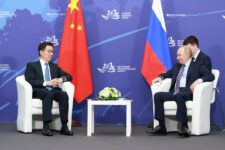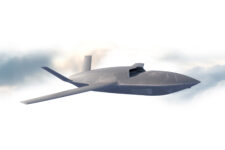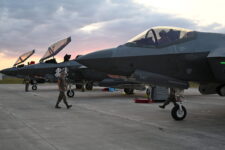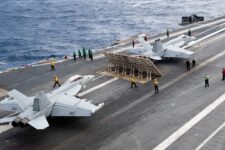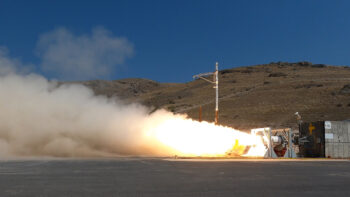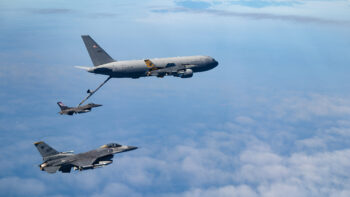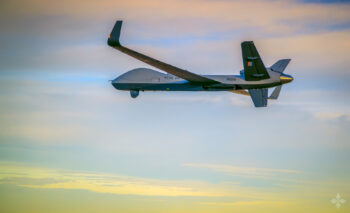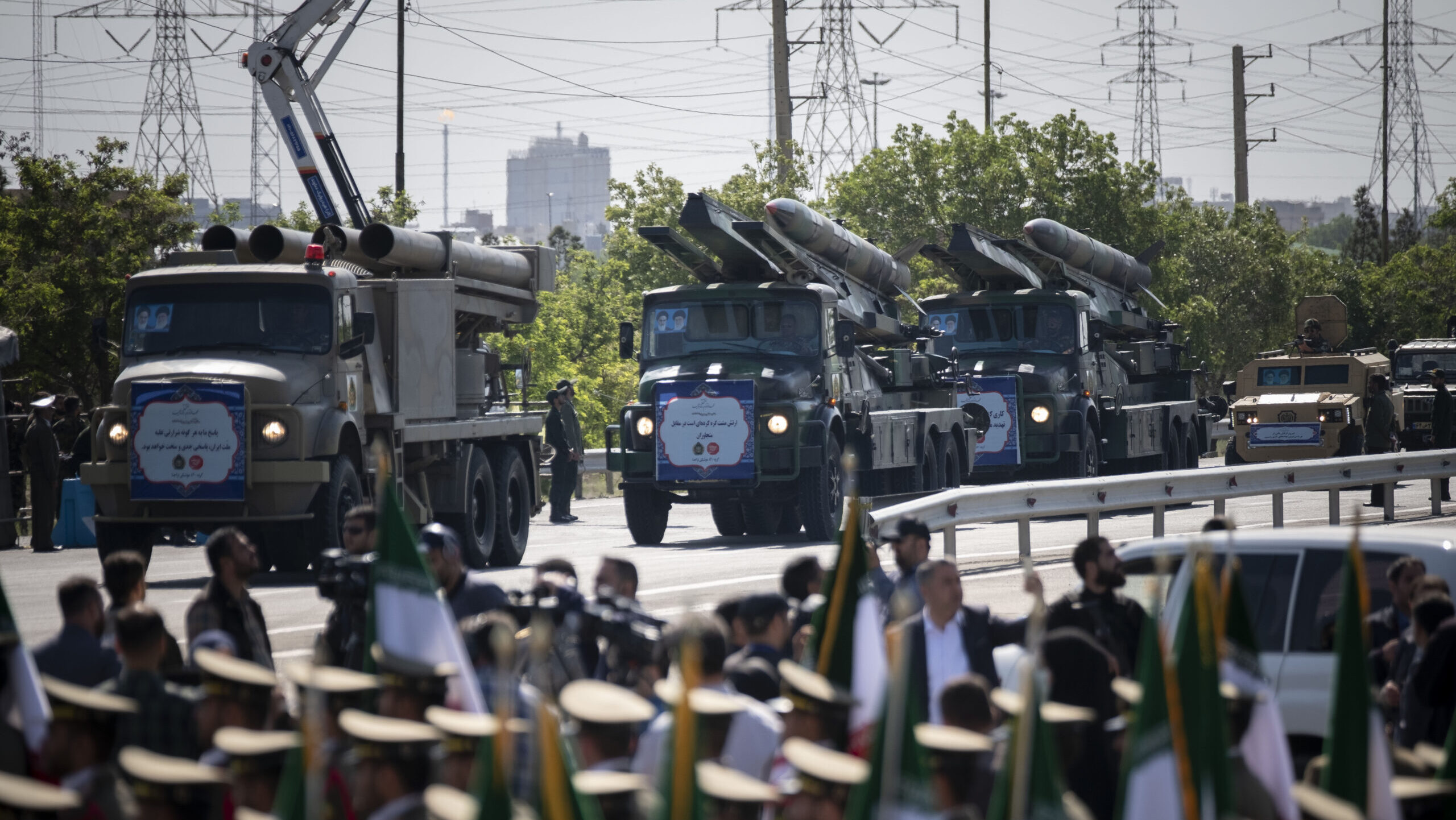
Military vehicles carrying Iranian-made surface-to-surface missiles take part in a military parade marking Iran’s Army Day anniversary near the Imam Khomeini shrine in the south of Tehran, April 18, 2023. (Photo by Morteza Nikoubazl/NurPhoto via Getty Images)
BEIRUT — On Tuesday the US leveled a new charge against Russia and Iran, alleging the Kremlin has received specific Iranian ballistic missiles for the first time and could employ them “within weeks” in the war in Ukraine — what America’s top diplomat called a “dramatic escalation.”
The purported move, denied by Iran, was condemned by Washington and its allies in Europe, but also served as a glimpse into Moscow’s tactical thinking and, potentially, some deeper capacity challenges the Kremlin’s war machine is facing, according to officials and experts.
Tactically, US officials suggested the 75-mile-range Fath-360 missiles would be used in close-in fights, allowing Russia to “preserv[e] its longer-range capabilities for use throughout the battlefield, thus deepening Russia’s arsenal and also, again, giving it the ability to strike the kinds of targets that we’ve seen them striking, to include civilian targets,” as Pentagon Press Secretary Maj. Gen. Pat Ryder put it.
Jean Loup Samaan, a senior research fellow at the Middle East Institute, agreed.
“Over the past two decades, Iran has developed one of the most advanced ballistic arsenals and the bulk of them are either short or mid-range,” Samaan told Breaking Defense. “I assume for Russia they are relevant for the kind of battles we see in the border area between Russian and Ukrainian troops, so at tactical level [they’ll be used] to exhaust the Ukrainians.”
But Samaan said Moscow’s outreach to Iran could be the latest clue about internal production woes.
“It may also indicate, just like with North Korean involvement behind Russia, that the Russian defense industry is struggling to keep the pace with the production of weapons used by the Russian forces,” he said.
RELATED: Russian ‘conquest’ of Ukraine on the table if US, allied military aid falters, study says
The Kremlin may have cause to worry about the effectiveness of Iranian missiles after Israel and its allies were able to take down virtually all the threats launched towards Israel in a dramatic mid-April barrage, but Behnam Ben Taleblu of the Foundation for Defense of Democracies think tank said that’s not as relevant an example as it may seem.
“The Fath-360 is a derivative of Iran’s most precise ballistic missile, the Fateh family of single-stage, solid-propellant short-range ballistic missiles,” Ben Taleblu told Breaking Defense. “Much of what Iran fired on April 13 were liquid-propellant medium-range ballistic missiles never before employed in regional military operations. There is a considerable difference between the track records of these two systems. And lest we forget, for Putin, the perfect is not the enemy of the good at the moment.”
Can Kasapoğlu, a senior fellow at the Hudson Institute, wrote in an analysis today that the Fath-360 is a “textbook tactical ballistic missile” whose “rapid launch cycle and low per-unit cost make it a formidable option, particularly when fired in salvos.”
Sanctions And Skepticism
In response to the purported Iranian missile transfer to Russia, France, Germany and the United Kingdom announced that they “will be taking immediate steps to cancel bilateral air services agreements with Iran,” in addition to sanctioning Iran air and entities and individuals involved with Iran’s missile program. The US followed suit.
While the sanctions and canceling economic ties are important, the experts said they did not consider them enough to deter Tehran.
“The sanctions have sometimes slowed down the nuclear and ballistic programs but over the past decades, the IRGC [Islamic Revolutionary Guard Corps] has always found ways to circumvent those sanctions. They have a strong indigenous defense industry that is able to develop those ballistic missiles and they also relied on Asian partners such as North Korea so that also weakened the impact of sanctions,” Samaan told Breaking Defense.
Ben Taleblu said that “if anything, these penalties are what should have been levied following Iran’s drone transfers [to Russia] two years ago to thwart the transfer of missiles more recently.”
“But now they can serve as the building block of a more coherent European policy toward Tehran if paired with the snap back of UN sanctions,” he added.
Regardless of the sanctions, it appears Russia’s ties to Iran are only growing stronger. Iran and Russia have both issued many statements that they are very close to signing a defense “comprehensive agreement” to boost their military cooperation, as well as formalize it.
“Iran’s widening radius of arms proliferation is a symptom of a much larger problem,” Ben Taleblu said. “Slowly and steadily, Iran and Russia are working to revise the regional balances of power in their favor, deepening their military cooperation and engaging in salami tactics against their adversaries while compartmentalizing their conflicts. Getting good on countering one of these threats will require improving your policy on the other.”
Ursa Major wins, matches $12.5M investment from DoD to improve solid rocket motor production
Ursa Major will match DoD’s $12.5 million investment bringing the total deal’s value up to $25 million.





